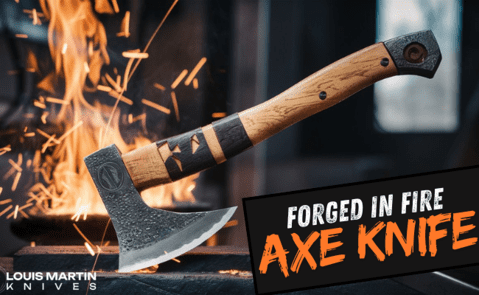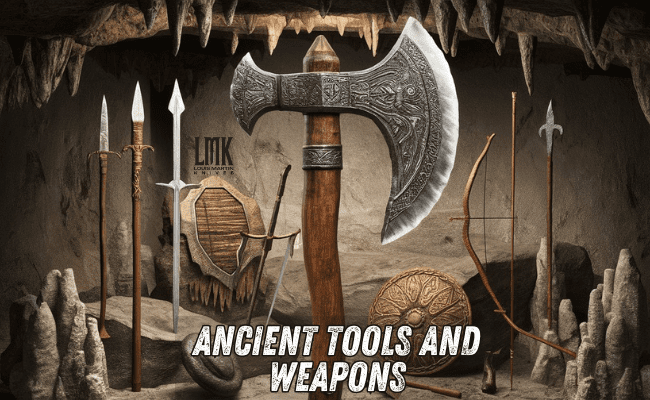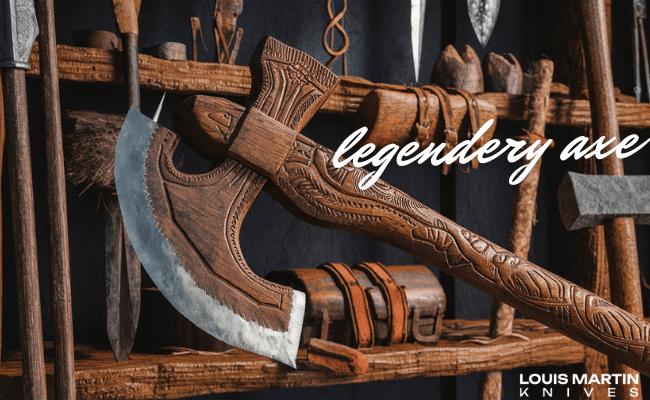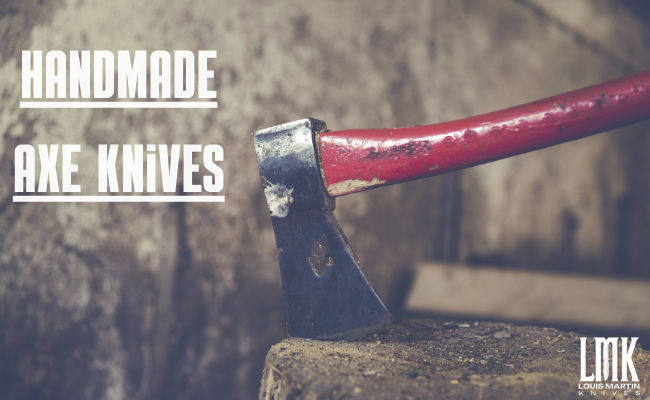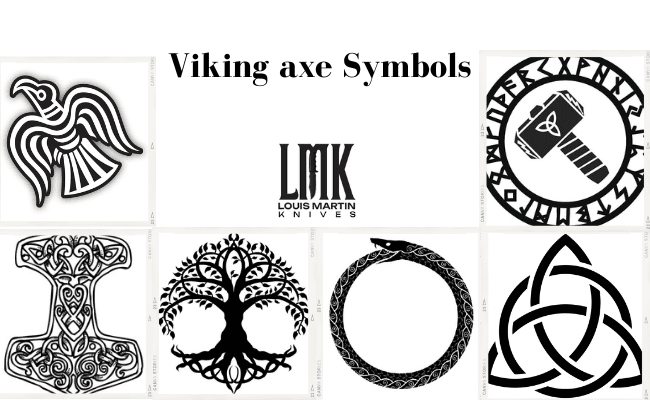A blacksmith uses a rhythmic hammer to hit blazing metal in a dimly lit forge, creating crackling heat in the air. Sparks fly, illuminating the experienced and focused craftsman’s face. With each blow, a blade starts to take shape as a half axe and part knife, becoming an instrument that combines creativity and necessity. This marks the invention of the axe knife, a multipurpose item that has traveled through time and left its mark as a weapon as well as a tool.
The axe knife is a symbol of human creativity and the unwavering will to survive, not just a useful instrument. The axe knife has changed to suit the needs of every age, whether it is being used as a cooking tool to cut through the toughest cuts or as a tactical survival axe in the woods. This article explores the history of axe knives, showing how they were molded by expert artisans and forged in fire before becoming a multipurpose weapon that is still indispensable today.
In the heart of a glowing forge, custom knives are born, merging the precision of a knife with the power of an axe. Discover the origins of the versatile axe knife.
Historical Background
Ancient Tools and Weapons
The capacity for innovation and adaptation was essential for human survival in the early stages of civilization. Simple tools fashioned of stone, bone, and wood were used by our ancestors. Among the most important were the axe and knife, each with a distinct function for felling trees, pursuing wildlife, or fending off attackers. Tools developed in tandem with the complexity of society. The axe knife, a hybrid weapon that combined the cutting strength of an axe with the precision of a knife, was created in response to the demand for a more effective and adaptable tool.
The Evolution of Metalworking
In human history, the discovery of metalworking was revolutionary. Middle Eastern and European civilizations forged tools and weapons out of bronze, then iron, as early as 2000 BCE. By heating metal until it became sufficiently pliable to be molded using hammers, blacksmiths were able to produce more robust and efficient tools. With their twofold purpose, the axe knives were a logical development from these discoveries. The axe knife gained symbolic significance by fusing the weight and cutting power of an axe with the cutting accuracy of a knife.
Origins of the Axe Knife Concept
Necessity likely led to the invention of the axe knife. A single tool with several uses was important in the harsh and brutal surroundings of ancient times. An axe knife can be used as a weapon in combat as well as for woodworking and game butchering. Because of its small size and adaptability, it was favored by explorers, warriors, and hunters alike. The axe knife evolved from a simple tool to a symbol of survival over time.
The Crafting Process
Selecting the Right Materials
The creation of axe knives begins with the selection of the right materials. Traditionally, blacksmiths used high-carbon steel for the blade, as it provided the perfect balance between hardness and durability. The handle, often made from wood, needed to be sturdy yet comfortable to grip. In some cultures, specific types of wood, such as hickory or ash, were preferred for their strength and shock-absorbing properties.
The Art of Blacksmithing
The main effort started after the materials were selected. Blacksmithing is a science and an art in equal measure. In a forge, the metal is heated to the ideal temperature, which allows it to be shaped without losing its structural integrity. After meticulously creating the blade to ensure the ideal balance of weight and sharpness, the blacksmith smashes the metal into the appropriate shape. The procedure calls for dexterity, tolerance, and a thorough understanding of the materials being utilized.
Design Considerations
The functions of the axe and the knife must be carefully balanced when designing an axe knife. The blade needs to be both thin enough to make precise cuts and robust enough to undertake chopping chores. The curve of the handle, the angle of the edge, and the form of the blade all have a significant impact on how effective the instrument is. An expertly made axe knives, which functions like a hand extension, is a monument to the blacksmith’s skill.
Axe Knife Set
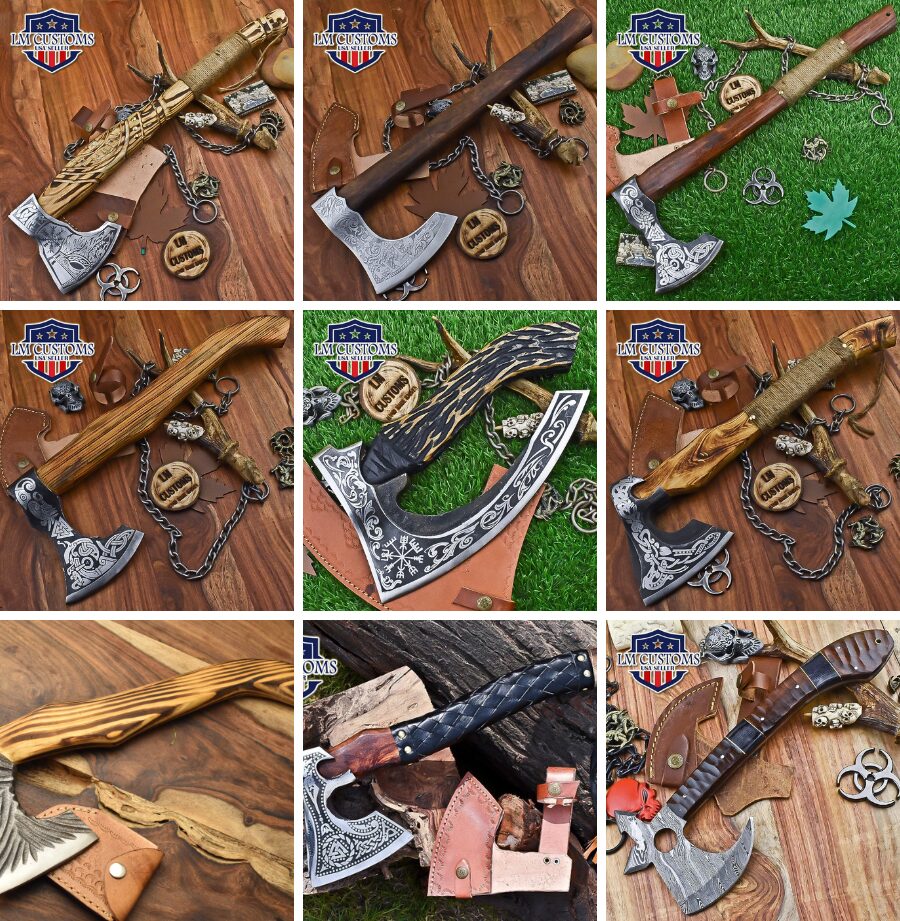
Cultural Significance
Symbolism in Ancient Cultures
The axe knife has been deeply significant in many civilizations throughout history. It was regarded as a symbol of strength and power in many ancient societies, frequently connected to heroes and warriors. Axe knives were handed to young men in various societies as a rite of passage, symbolizing their entry into maturity. The implement held tradition and identity in addition to being useful.
Role in Warfare and Hunting
The axe knives were an indispensable tool for hunting and combat. Warriors depended on its adaptability in battle, employing it as a survival aid in hostile areas and as a weapon in close quarters. Its capacity to kill and process wildlife was highly appreciated by hunters, who considered it an essential component of their equipment. The current tactical survival axe is a direct descendant of these antiquated implements, developed for modern explorers in need of a dependable, multipurpose tool while venturing into the wilderness.
The Axe Knife in Myth and Legend
Folklore and Mythology
The axe knife has also found its way into the myths and legends of various cultures. In Norse mythology, for example, the god Thor is often depicted wielding a mighty axe, symbolizing his strength and warrior spirit. In Native American folklore, the axe knife is a common motif, representing the connection between man and nature. These stories highlight the deep cultural significance of the axe knives, elevating it from a mere tool to a symbol of heroism and resilience.
Heroic Tales
Throughout history, there have been countless tales of heroes who wielded axe knives in their quests for justice, survival, or glory. Whether it’s a Viking warrior defending his homeland or a pioneer carving out a life in the wilderness, the axe knife has always been associated with those who face adversity head-on. These stories continue to inspire modern-day adventurers and survivalists, who see the axe knife as a symbol of strength and perseverance.
The Axe Knife in Modern Times
Contemporary Uses
Today, the axe knife has evolved to meet the needs of a wide range of users. From the tactical survival axe carried by outdoor enthusiasts to the kitchen axe knife used by chefs, this versatile tool continues to prove its worth. Modern materials like stainless steel and composite handles have made the axe knife more durable and reliable than ever before. Whether you’re camping in the wilderness or preparing a meal at home, the axe knife remains a trusted companion.
Modern Manufacturing Techniques
While traditional blacksmithing methods are still revered, modern manufacturing techniques have brought new possibilities to the design and production of axe knives. CNC machining and laser cutting allow for greater precision and consistency, while advancements in metallurgy have led to stronger and lighter blades. The survival axe multi-tool, with its integrated features like fire starters and a compass, represents the latest evolution of this ancient tool.
Collectors and Enthusiasts
The enduring appeal of the axe knife has also given rise to a community of collectors and enthusiasts who appreciate the craftsmanship and history behind these tools. From antique axe knives with historical significance to custom-made pieces by modern artisans, axe knives continue to capture the imagination of those who value both function and form.
Conclusion
The Axe Knife’s journey is a tale of human resourcefulness, tenacity, and flexibility. This tool was created by fire and molded by the desire to survive; it began as a basic survival tool and developed into a representation of strength and adaptability. The axe knives are still as useful today as they were in antiquity, whether they are being used as culinary axes in the house or as tactical survival axes in the wilderness. The axe knives will surely always be a loyal friend as we develop and discover new horizons since they symbolize the perseverance of individuals who dare to pave their way.
FAQs
1. What is an axe knife used for?
An axe knife is a versatile tool that combines the chopping power of an axe with the cutting precision of a knife. It can be used for various tasks, including wood chopping, game butchering, and even as a survival tool in the wilderness.
2. How is a tactical survival axe different from a regular axe knife?
A tactical survival axe is designed specifically for outdoor survival situations, often featuring additional tools like fire starters and compasses. While a regular axe knife is primarily a cutting tool, a tactical survival axe is a multi-tool built for versatile, rugged use in challenging environments.
